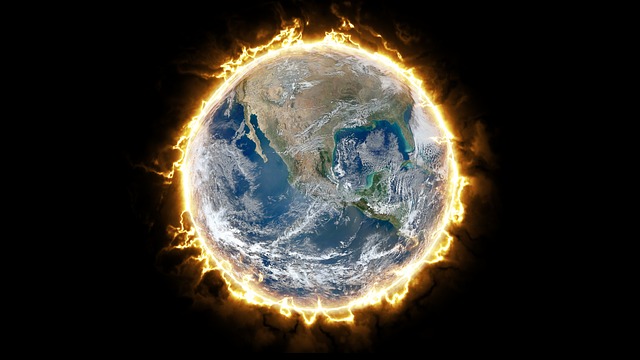
It’s not the first time we’ve heard this grim warning. Initially, Hawking gave humanity a timeline of 1,000 years. After a few months, he moved up the deadline to just 100 years. This time, speaking (via video link) at the Starmus Festival held in Norway, apart from reiterating his warning, saying some strong words about Donald Trump’s actions against fighting climate change, he is likewise clamoring for renewed interest in space-related programs — calling for nations to bond together to send astronauts to the Moon by 2020; build a lunar base in 30 years; land on Mars by 2025; and start a human exodus to Mars in 50 years.
The goal is no longer just mere space exploration. It’s going to be a race against time to find a new world to inhabit. And Hawking is hoping that such noble goal will be enough of a driving force to unite nations so we can together overcome the global challenge we are facing — ‘threats from so many areas’ that are ‘too big and too numerous’.
There’s the draining of our physical resources, climate change, rising temperatures, polar ice cap reduction, deforestation and decimation of the animal species. There’s also the increasing risk that we will experience an extinction-level event, much like what happened when the dinosaurs got wiped out. Aside from internal threats like overpopulation, epidemics and climate change, there are also external threats like ‘asteroids, black holes, super nova, and solar radiation’.
He explained that we had been confronted with similar crises several times in the past. Back then, however, there was always some place new to conquer, just like Columbus did in 1492 when he discovered the New World. But we’re past that now because there’s no other place to discover. On Earth that is. Which is why we have to step out of our ‘comfort zone’, so to speak, and literally discover new worlds.
Hawking said: “We are running out of space and the only places to go to are other worlds. It is time to explore other solar systems. Spreading out may be the only thing that saves us from ourselves. I am convinced that humans need to leave Earth.”
The most logical starting point would be the cosmic worlds closest to us — our moon and Mars. Unfortunately, neither is feasible to become our second home. The moon doesn’t have liquid water to support life; neither does it have a magnetic field to protect life. Mars may once have had liquid water and some form of atmosphere, but now it doesn’t. And so we might need to look farther.
Located around 4.5 light-years away is Proxima Centauri. Circling it is Proxima Centauri b, a somewhat Earth-like planet that may or may not be habitable — we’ll have to get there to find out. With our current technologies, that will take roughly 3 million years. We can’t be contented with that, of course, because we don’t have the luxury of that much time. That’s why we need revolutionary developments in the field of space travel.
Hawking also mentioned the “Breakthrough Star Shot” program he’s been working on with billionaire Yuri Milner. If the program proves successful, it could send a probe that could ‘reach Mars in less than an hour, reach Pluto in days, pass Voyager in under a week, and reach Alpha Centauri [our closest star neighbor] in just over 20 years. These are certainly very optimistic time-lines which if realized could lead to the realization of interstellar travel and hopefully, the preservation of the human race.
In the meantime, here are Hawking’s dire words: “Human colonization on other planets is no longer science fiction. It can be science fact. The human race has existed as a separate species for about 2 million years. Civilization began about 10,000 years ago, and the rate of development has been steadily increasing. If humanity is to continue for another million years, our future lies in boldly going where no one else has gone before.”
- Bulenox: Get 45% to 91% OFF ... Use Discount Code: UNO
- Risk Our Money Not Yours | Get 50% to 90% OFF ... Use Discount Code: MMBVBKSM
Disclaimer: This page contains affiliate links. If you choose to make a purchase after clicking a link, we may receive a commission at no additional cost to you. Thank you for your support!




Leave a Reply